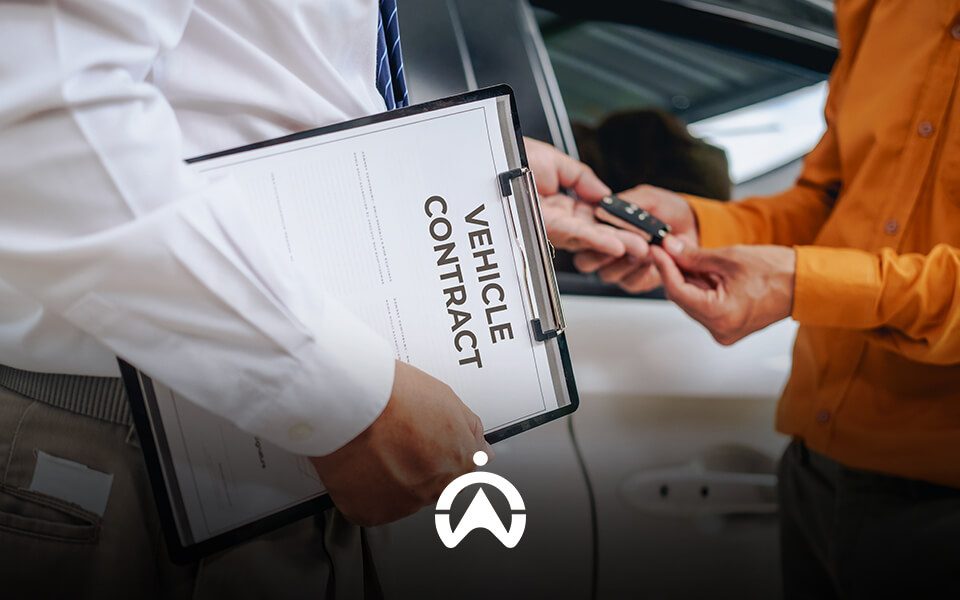Fleet Fuel Card Integration – Empower Your Fleet With Efficiency and Security
When it comes to managing fuel efficiently and reducing costs for your fleet business, fuel credit cards stand out as one of the top solutions.
Explore the intricacies of these cards and discover how they can ease all your fuel expense-tracking headaches.
Is it time to invest in some fuel cards? All your answers are right here.
Fleet fuel cards — your answer to efficient fuel cost management
These nifty cards are used by drivers to quickly refuel company vehicles, alleviating headaches and confusion for fleet managers. Fuel cards help managers effortlessly keep track of all their fuel expenses. You will instantly know which driver fueled up, what vehicle they used, how much they spent and where they fuelled up.
Say goodbye to endless fuel-related paperwork. Now drivers can enjoy the convenience and safety of fuel cards and not worry about handling cash and receipts.
How to get started: Fleet fuel card integration
Empower your fleet with fuel cards, the game-changer for managing your fuel expenses. Equipping your business with this feature comes with a list of benefits but before we dive into those, let’s unpack a quick step-by-step guide on how to get a fuel card:
- Explore fuel card providers:
Investigate reputable fuel card providers in your area such as oil brands like Shell and BP, or companies that specialise in fuel cards. Take into account factors such as coverage, acceptance across various fuel stations, fees, and additional features.
- Compare offerings:
Evaluate the offerings of different fuel card providers. Examine features such as spending controls, reporting capabilities, and any extra services they may offer.
- Select a provider:
Choose the fuel card provider that aligns best with your business requirements and provides the most suitable features for effective fleet management.
- Complete the application:
Most fuel card providers facilitate online applications. Complete the required information, typically including details about your business and fleet.
- Receive approval:
Once your application is approved, and you’ve received the cards, it’s time to activate them following the provider’s instructions.
- Assign cards:
There are two methods for allocating fleet cards, assigning them to individual drivers or each vehicle.- Vehicle – If your drivers use different vehicles regularly, assign one card to each vehicle, instructing drivers to leave the card in the vehicle for the next driver to use when needed.
– Driver – If they primarily stick to one vehicle, provide each driver with a unique PIN that works with every card. This way, you can track which driver fueled which vehicle.
- Implement restrictions:
Fuel cards provide drivers with easy refuelling but it is not without limits, managers can control fuel card usage by setting up some of these limits:- Litre or cash limit per transactionLitre or cash limit per transactionLitre or cash limit per transaction
– Number of transactions made per day for each card
– Time of day limit
– Type of fuel
This prevents overspending, empowering managers to decide each driver or vehicle’s fuel expenditure.
Now that you have your provider and your cards, it’s time to integrate them into your fleet, this is done by linking the cards to your fleet management system.
Here are three approaches to make this happen:
- API integration:
Several fleet management systems come with Application Programming Interfaces (APIs) that allow for seamless communication and data exchange with various systems, in this case, the systems would be between your fleet management system and the fuel card provider.With API integration, you can automatically bring fuel card data into your fleet management system so that every time a fuel transaction occurs, data seamlessly flows from the fuel card provider’s system to your FMS, giving you real-time updates on all fuel purchases.
- Data integration platform:
If your fleet management system or fuel card provider doesn’t provide direct API integration, you can opt for a data integration platform. These platforms act as the middleman, translating data between two systems. It will regularly check for new fuel transactions from the fuel card provider, translate the data into a format compatible with your FMS, and import it to your fleet system, ensuring smooth communication.They offer similar benefits to APIs like automated data import and detailed reports but might involve a subscription fee and a complex setup.
- Manual data import:
Though not ideal, some businesses may resort to manual import of fuel card data through spreadsheets or CSV files.While this method is time-consuming and prone to errors, it can serve as a temporary fix for those not ready for advanced integration solutions like those listed above.

Why use fuel cards?
Fuel cards offer a range of perks for businesses. Imagine your drivers enjoying hassle-free refuelling at almost every gas station across the country. Not only that, but many fuel cards also bring extra savings at the pump through fuel discounts and VAT savings, putting more money back in your pocket.
Think about the convenience of having an organised system that tracks fuel expenses. Your fuel cost records will always be up to date, making it a breeze to control and minimise financial loss. On the security front, fuel cards act as a shield against unauthorised purchases, safeguarding your budget and your drivers as without cash on hand, the risk of them getting mugged decreases.
Why should you integrate fuel cards into your fleet business?
Similar to credit or debit cards, fuel cards are crafted exclusively for transactions related to fuel. Here’s a breakdown of their advantages:
- Fuel purchases: Drivers use these cards to buy fuel at specific stations, linking the expense directly to the business.
- Expense tracking: Every time the card is used, it keeps a record, showing a detailed view of fuel costs for each vehicle.
- Cost control: Fleet managers can set spending limits with these cards, ensuring fuel purchases stay within the budget.
- Data integration: These cards can talk to fleet management software, giving a clear picture of fuel use, efficiency, and costs.
- Security: Fuel cards have security features, like PIN codes, making sure only authorised drivers can use them, and since drivers don’t carry cash anymore, they are no longer at risk of being robbed while on the job.
- Convenient reporting: Fleet managers can easily generate reports showing all the fuel-related expenses, making money management smoother and more accurate.
- Network of acceptance: These cards work with specific fuel networks or stations, so it’s essential to choose the right one for your fleet’s convenience.
Reduced Admin Work: No more hassle with manual record-keeping for fuel receipts and reimbursements. These cards save time for both drivers and fleet managers.
Common fuel theft methods conducted through fuel cards
Fuel theft can have a significant impact on businesses affecting various aspects of operations. There are countless ways criminals can steal fuel from fleet vehicles. One of the most popular fuel theft trends is syphoning (sucking fuel out from a vehicle into a container for personal use), but when it comes to your fuel card, the following methods are more commonly used:
- False transactions: This type of fuel theft occurs when gas station employees collude with thieves. The employee swipes the fuel card multiple times for a single transaction, resulting in multiple charges on the cardholder’s account. This method is difficult to detect as transactions are coming from a valid fuel card and fuel sensors won’t detect any unusual activity because the tank was empty and needed a refill, justifying the purchase.
- Fuel card fraud: Fuel card fraud occurs when unauthorised individuals obtain and use a company’s fuel card to purchase fuel for their vehicles. This can be done by stealing a physical card, skimming card data at fuel stations, or using stolen card information to create fraudulent transactions online. These cloned cards can then be used to purchase fuel at any filling station.
Easily manage your fuel cards and overall fuel costs with Cartrack Swaziland
Unlock a wealth of benefits and gain complete control over your fleet’s fuel expenses with Cartrack Swaziland. We provide reliable and trustworthy fleet management solutions that can help you manage your fuel costs and improve operational efficiency.
Here are a few ways Cartrack’s fleet management software and MiFleet can help you in your pursuit of taking charge of your fleet fuel costs:
Effortlessly monitor and manage your fuel card with Cartrack’s MiFleet system
MiFleet is a cost management system that monitors all your fleet’s administration and running costs, including toll fees, maintenance costs, and all fuel expenditures.
In terms of fuel card monitoring, MiFleet can analyse fuel card transactions and automatically cross-reference them with your vehicle’s telemetry data to quickly identify which driver swiped for fuel refilling, for which vehicle and at what time/location.
By just importing your fuel card transactions into the MiFleet system, our MiFleet AI system automatically tracks all fuel card usage and presents the information in an easy-to-understand format on the MiFleet digital platform, making managing your fuel data a breeze.

With MiFleet you can:
Monitor fuel consumption:
Get information on fuel consumption rates per km, current fuel levels and fuel-wasting events like abnormal idling, speeding and more during a trip, allowing you to pinpoint areas for enhanced fuel efficiency.
Detect fuel theft:
In events of possible fuel card fraud, MiFleet automatically identifies potential fuel-related risks by matching fuel receipts with the vehicle’s location and fuel status, if flagged, it notifies fleet managers so they can start investigating and stop fuel cost wastages.
Generate informative reports:
Paired with our fleet management system, you gain access to detailed reports like fuel usage and risk analysis. These reports allow you to validate, verify, and analyse fuel cost data, identify trends, and make informed decisions to optimise fleet fuel card management.
Why you’ll love MiFleet:
- MiFleet automatically detects fuel theft, saving you thousands monthly
- Decreased time spent on manual admin
- Easily spots fuel cost leakage and stops human error
- Increased trust and accountability for drivers
Swipe your fleet to fuel cost management efficiency
If you are looking for a way to improve yourfleet’s fuel efficiency and save money on fuel costs, Cartrack Swaziland fuel management solutions are a great option.
Join over 110,000 businesses and trust Cartrack Swaziland with your fleet and your fuel. Start today with Cartrack Swaziland.




